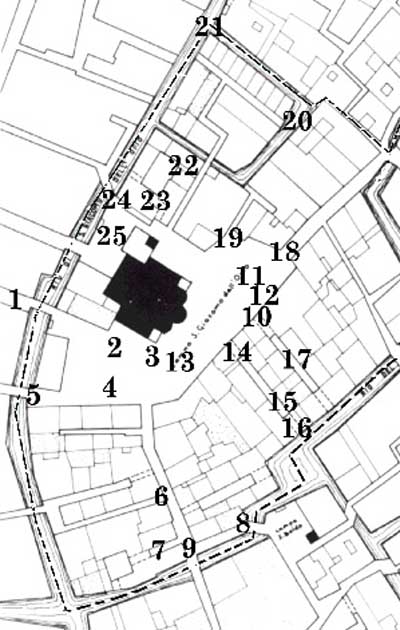|
|
|
|
1. Ponte Ruga Bella o del Forner
This is one of two bridges that lead directly into the campo.
|
| 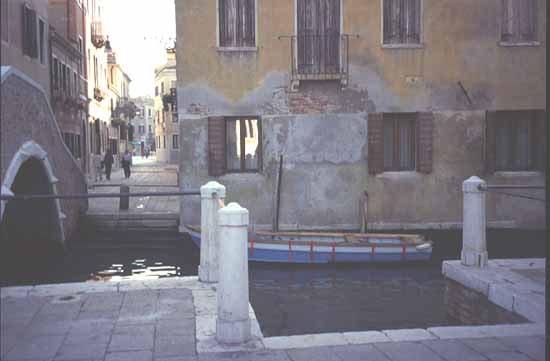 |
|
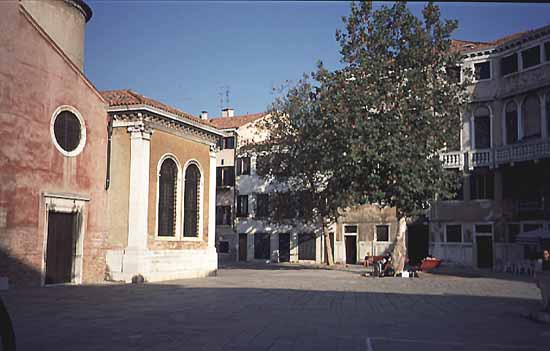 |
|
2. Campo San Giacomo dall'Orio
Looking east. The side of the church is at left; the campo continues around behind the church to its other side.
|
|
|
3. Campo San Giacomo dall'Orio
Looking southeast. The Calle del Tintor is toward the left.
|
| 
|
|

|
|
4. Campo San Giacomo dall'Orio
Looking south. The exit at right at the back leads to the bridge shown in the next picture.
|
|
|
5. Bridge leading to Corte dell'Anatomia
The other bridge directly connected to the campo also comes from the next island to the west. Note that the bridge's other end connects to a sottoportego.
|
|
 |
|

|
|
6. View from Calle Tintor
The Calle Tintor is one of two main land exits from the campo. There are several smaller calli leading off it; one of these has a sottoportego.
|
|
|
7. Alley off Calle Tintor, northwest of Ponte Parruchetta
Just before the Calle Tintor reaches a bridge and leaves the parish, this ramo leads off to the west. At the far end, it widens into a small corte, makes a left turn, and fetches up at the canal.
|
|  |
|
 |
|
8. Bridge to northeast of Ponte de Parruchetta
The Rio di San Boldo makes a small zigzag here, and so the bridge is angled to cross at the corners, connecting two campielli in different parishes. Here we are looking out of the parish of San Giacomo.
|
|
|
9. Ponte di Parruchetta
This bridge is also placed at an angle--in this case, to accomodate a mismatch in openings between the buildings already existing when the bridge was constructed.
|
|
 |
|
 |
|
10. Sottoportego off Campo
The Campo San Giacono dall'Orio has a number of sottoporteghi leading off its eastern side. The entrance to this one may be seen in picture #2.
|
|
|
11. Campo San Giacomo dall'Orio
Looking north. You can see one of the three wells that are in the campo.
|
|
 |
|
 |
|
12. Campo San Giacomo dall'Orio
Looking northeast.
|
|
|
13a. Church of San Giacomo dall'Orio
One-half of the rear, as seen from the campo.
|
|
 |
|
 |
|
13b. Church of San Giacomo dall'Orio
The other half of the church. The exterior of the building is not entirely symmetrical. Inside, there is a notable 14th-century ship's-keel roof, and a wealth of Renaissance paintings by Lotto, Andrea Schiavone, Palma il Giovane and Veronese.
|
|
|
14. Calle del Mezzo
This street, leading directly off the campo, begins and ends in sottoporteghi.
|
|
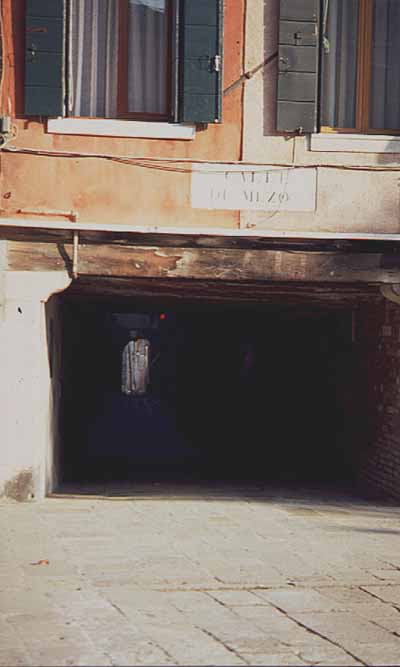 |
|
 |
|
15. Calle del Mezzo
All of five feet wide.
|
|
|
16. Calle del Mezzo
Canal stairs look out onto Rio del Megio from a sottoportego.
|
|
 |
|
 |
|
17. Calle Zambelli
Another calle with multiple sottoporteghi.
|
|
|
18. Calle Larga
This is the other major calle leading out of the campo. This one is at the northeast corner.
|
|
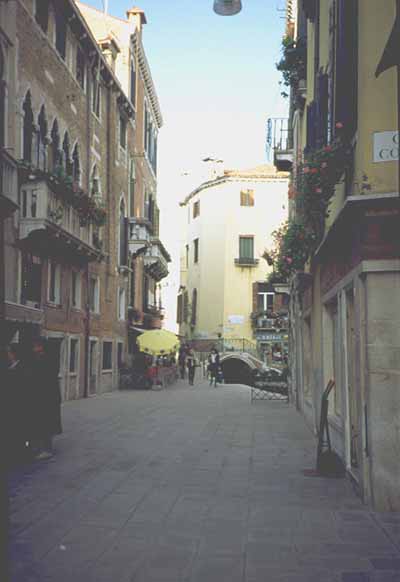 |
|
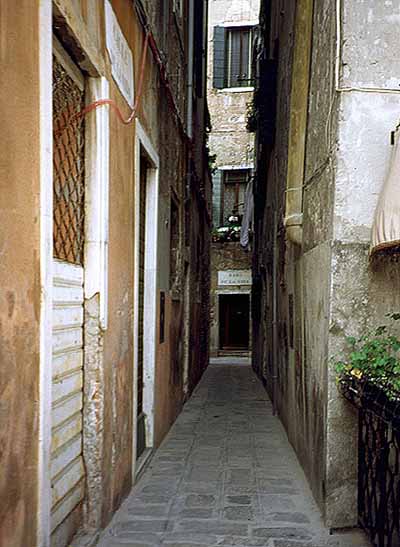 |
|
19. Calle della Vita
In an amusing juxtaposition, this alley leads off the Campiello dei Morti near the northeast corner of the church.
|
|
|
20a. Rio Terra dell'Isola
This street used to be a U-shaped canal. No, nobody believes that the canal is still there--the boats belong to a boat-building business at left.
|
|
 |
|
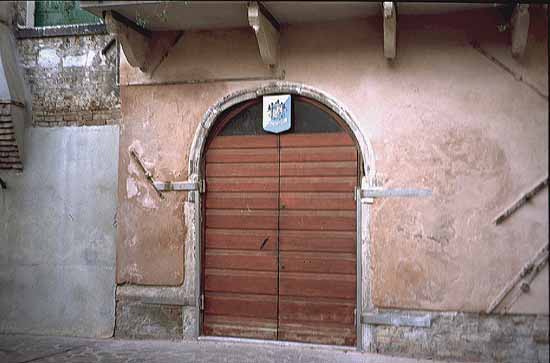 |
|
20b. Nicolotti Headquarters, Rio Terra dell'Isola
The workingmen of Venice were traditionally divided into two antagonistic factions, the Nicolotti and the Castellani. The rivalry, formerly expressed in turf battles that first involved campi and later bridges, later was transmuted into competition at the yearly regattas. The organizations still persist, although in considerably muted form. Here is some sort of facility belonging to the faction that originally came from the Dorsoduro.
|
|
|
20c. Nicolotti Headquarters, Rio Terra dell'Isola
A closeup of the coat of arms.
|
| 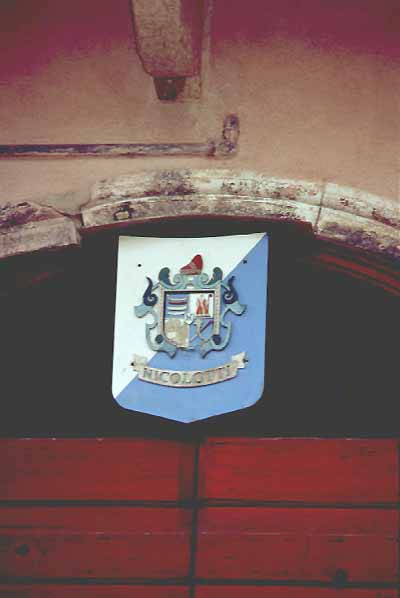 |
|
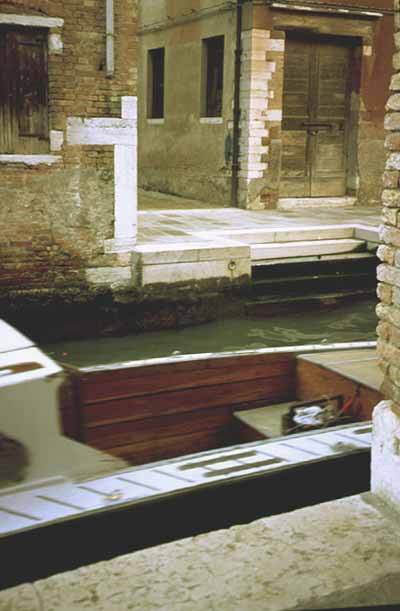 |
|
21. Rio di San Giacomo dall'Orio
Taken from the end of the Rio Terra dell'Isola.
|
|
|
22. Corte Oscura
This is a courtyard totally hidden inside the area just north of the church.
|
|
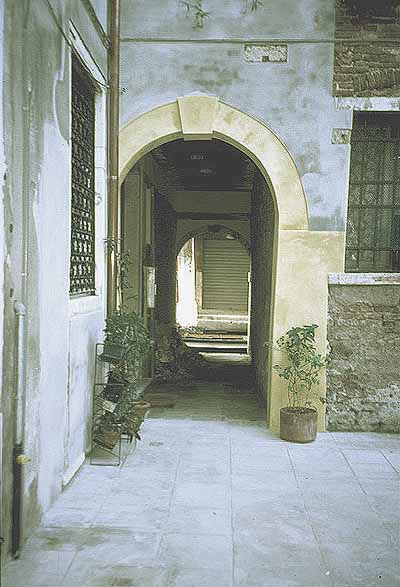 |
|
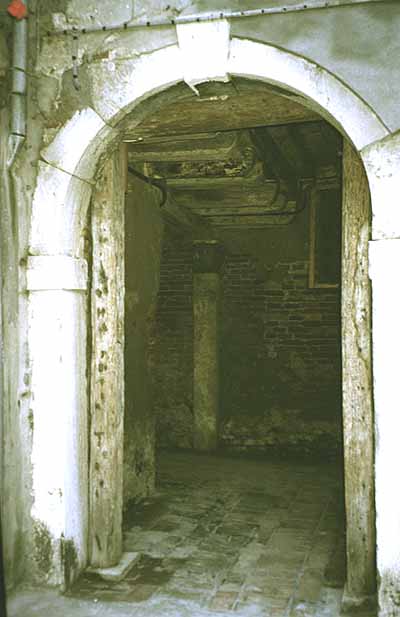 |
|
23. Corte Oscura
The southern exit from the cortyard is a sottoportego with a right-angle bend in the middle.
|
|
|
24. Campiello del Piovan
This small open space supports two bridges and the main entrance to the church. Here, the angled bridge to the Calle delle Savie, with the side of the church at left.
|
|
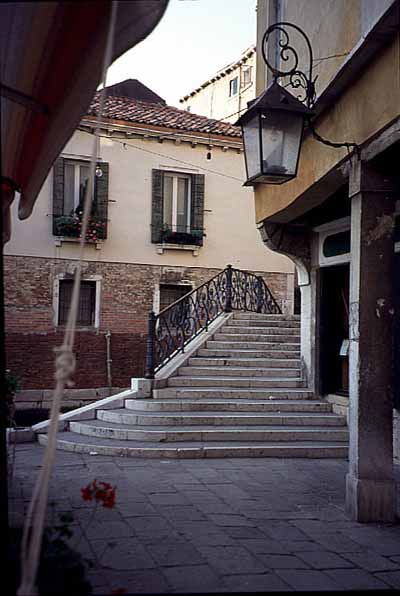 |
|
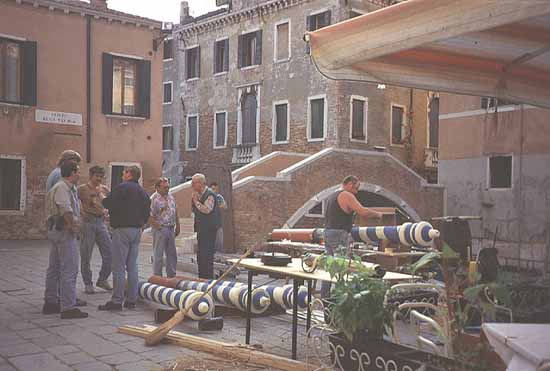 |
|
25. Campiello del Piovan
With various boat-related businesses to the north, this makes a useful staging area for such activities as painting gondola mooring poles. The bridge is to the Calle di Ruga Vecchia.
|
|
